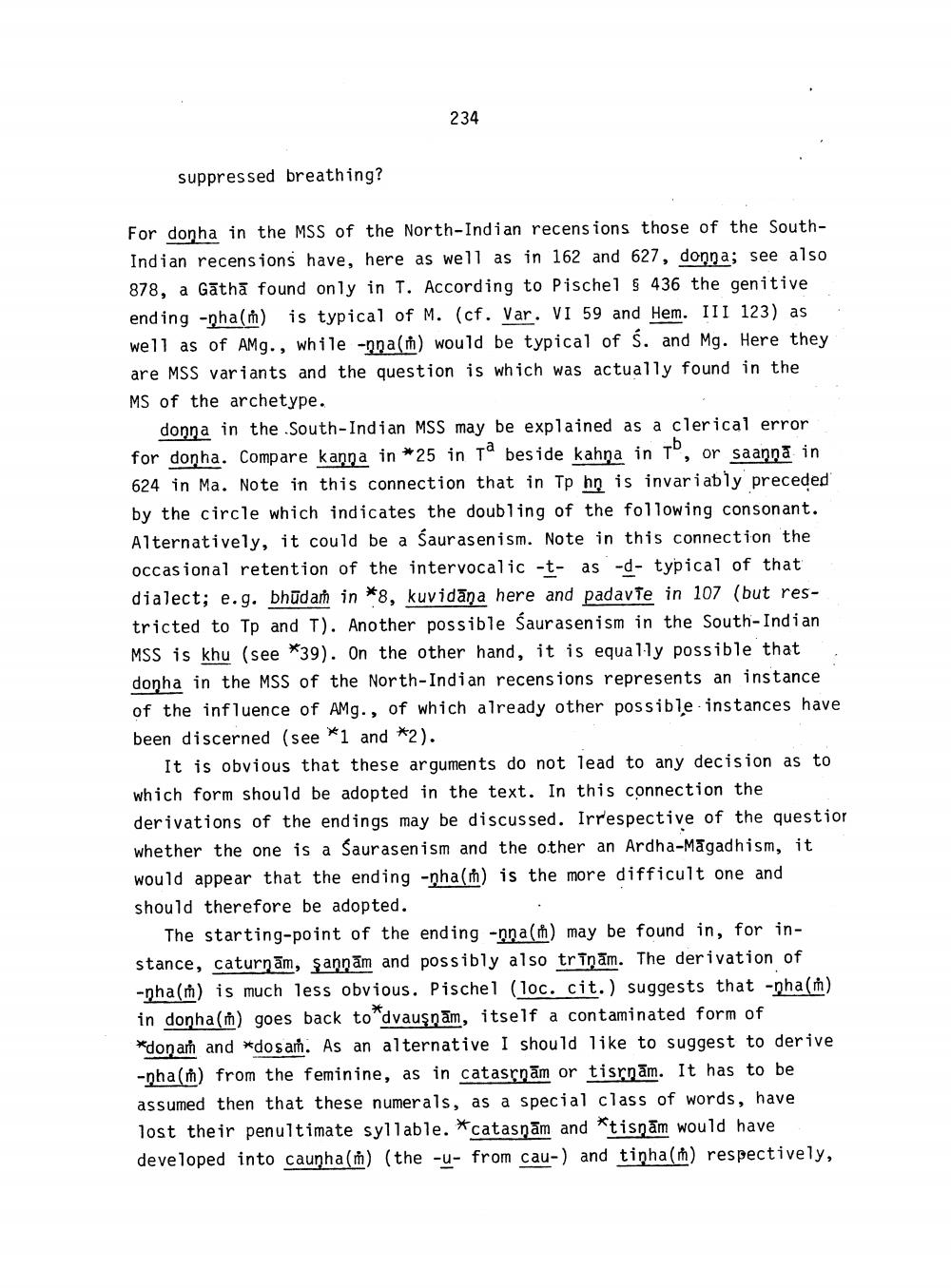________________
234
suppressed breathing?
For donha in the MSS of the North-Indian recensions those of the SouthIndian recensions have, here as well as in 162 and 627, donna; see also 878, a Gāthā found only in T. According to Pischel § 436 the genitive ending -nha() is typical of M. (cf. Var. VI 59 and Hem. III 123) as well as of Amg., while - nain) would be typical of ś. and Mg. Here they are MSS variants and the question is which was actually found in the MS of the archetype.
donna in the South-Indian MSS may be explained as a clerical error for donha. Compare kanna in *25 in To beside kahna in to, or saanna in 624 in Ma. Note in this connection that in Tp hņ is invariably preceded by the circle which indicates the doubling of the following consonant. Alternatively, it could be a saurasenism. Note in this connection the occasional retention of the intervocalic -t- as -d- typical of that dialect; e.g. bhūdań in *8, kuvidāņa here and padavie in 107 (but restricted to Tp and T). Another possible Saurasenism in the South-Indian MSS is khu (see *39). On the other hand, it is equally possible that donha in the MSS of the North-Indian recensions represents an instance of the influence of AMG., of which already other possible instances have been discerned (see *1 and *2).
It is obvious that these arguments do not lead to any decision as to which form should be adopted in the text. In this connection the derivations of the endings may be discussed. Irrespective of the questior whether the one is a saurasenism and the other an Ardha-Magadhism, it would appear that the ending -nha(n) is the more difficult one and should therefore be adopted.
The starting-point of the ending -nnath) may be found in, for instance, caturnām, şannām and possibly also trīņām. The derivation of -nha() is much less obvious. Pischel (loc. cit.) suggests that -nha(m) in donha (ñ) goes back to*dvausnām, itself a contaminated form of *donaṁ and *dosam. As an alternative I should like to suggest to derive -nha() from the feminine, as in catasrnām or tisrnām. It has to be assumed then that these numerals, as a special class of words, have lost their penultimate syllable. *catasņām and "tisnām would have developed into caunha() (the -u- from cau-) and tinha(in) respectively,




